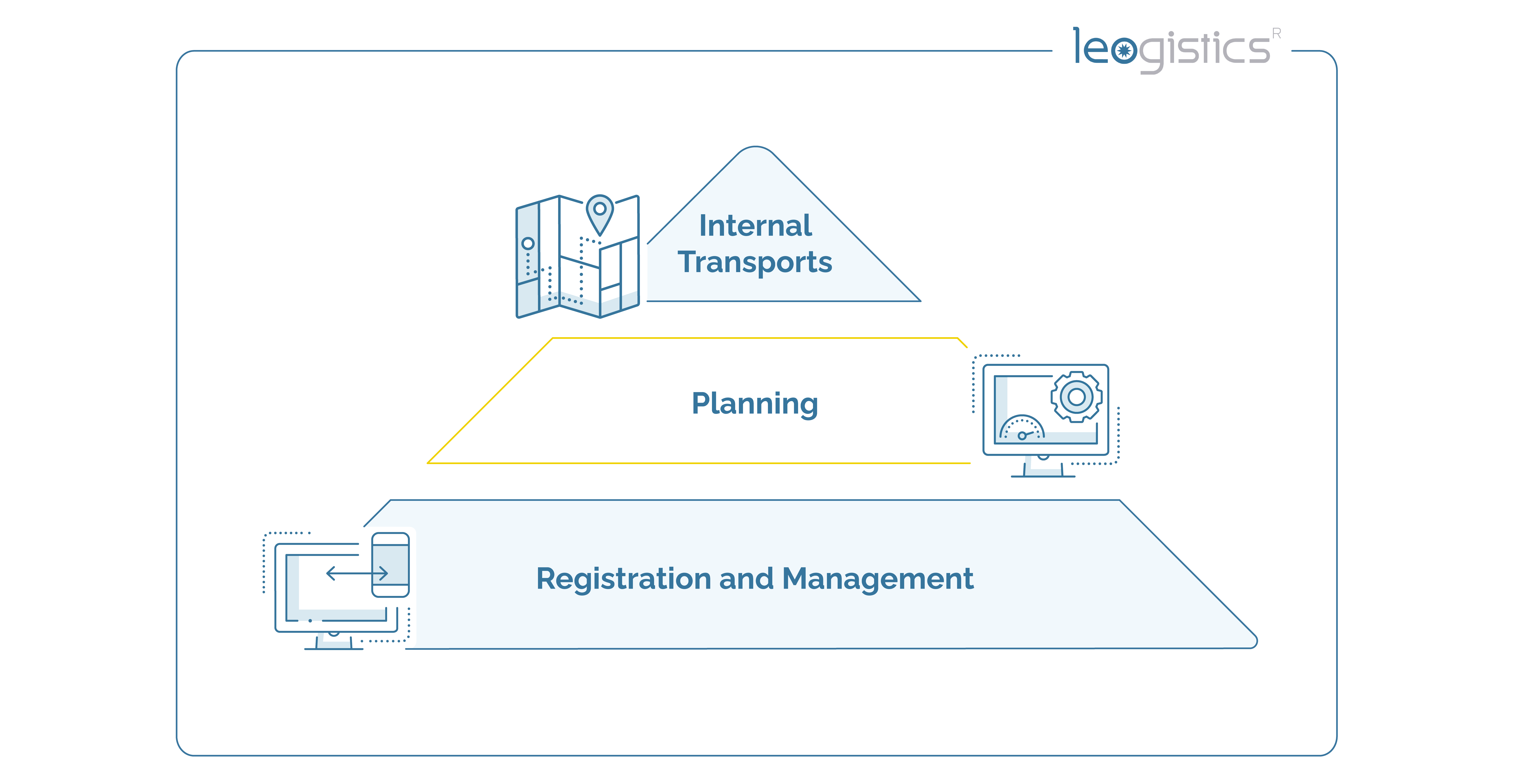Simplifying yard processes with digitization and automation
When discussing yard management, the focus is often on the classic handling of trucks. With the help of modern solutions, many processes can be digitized and automated. Automatically controlled call-offs, for example, can drastically reduce throughput times. Contactless and paperless handling and security checks are also always a topic. However, the first consideration often neglects an aspect that we encounter with almost all customers and which usually also offers considerable potential for optimization: the handling of load carriers such as containers, swap bodies, box pallets or trailers.
Reducing costs through sensible load carrier management
Particularly in the area of load carrier management, there are often manual and paper-heavy processes, media disruptions and low transparency. Containers or swap bodies are often registered manually and inventories are managed in Excel lists or isolated systems. In addition, there is usually only rudimentary planning for the use and loading of the load carriers. Internal transports of the load carriers can therefore only be coordinated to a limited extent and existing resources cannot be used optimally as a result. Especially with the increasing scarcity of load carriers such as containers due to limited available resources, overcrowded ports and changing flows of goods, optimal utilization should have a high priority.
Load carrier management in your yard - core areas
We often divide load carrier management in our customer projects into the following sub-processes:
- Recording
- planning
- Internal transports
- Loading
- Inventory management and reporting

Step by step to digital load carrier management
How can we cooperate to digitize and optimize your load carrier management? Based on the typical process steps, we approach the implementation step by step. In this way, the first optimization potentials can be quickly utilized and requirements as well as valuable findings for the next steps can be collected. The registration and management of load carriers form the foundation in the first step. Subsequently, the planning as well as the optimization of internal transports based on this can be realized.

In the following, I will present the mentioned areas in more detail using the example of a classic swap body scenario and explain how the existing optimization potential can be used with the help of a yard management system.
1. Registration and management
For the digitalization of load carrier management, it is important that a solid data basis is already created when the load carriers are registered. Often, there are paper routing slips or a subsequent registration of swap bodies on the site of the plant. With the help of digital check-in processes via truck terminals, driver apps, or also during booking of loading slots, the recording can be mapped on the system side. Once the swap bodies have been recorded, inventory management can also be displayed. This creates transparency as to which and how many swap bodies are on site and whether there are currently any bottlenecks. With the help of mobile apps, the inventory on the site can be checked and corrected if necessary.
2. Planning and loading
The capture and inventory management of swap bodies lays the foundation for planning and loading processes. Swap bodies can now be scheduled for loading and unloading and assigned to outbound shipments. In addition to tracking the loading status, this also enables the recording of load securing, booking of inventories as well as the automatic booking out of swap bodies after the outbound transport has been cleared.
For this purpose, we implement customized planning cockpits for our customers, which can be used to link cargo, load carriers and transport. This data can also be used to derive inventory forecasts and identify bottlenecks. In a customer scenario, for example, we identify bottlenecks in the supply of rail cars and enable an early response and optimization of resource utilization.
3. Internal transports
If it is clear which swap body is needed when and where, internal transports can be planned and optimized in the system. Mafi drivers receive their assigned transport orders on mobile devices and can start and confirm them. Furthermore, it is possible to report back via transport orders where the swap bodies have been parked again after loading has been completed. In this way, internal transport routes and the use of internal resources can be further optimized.
A glimpse into the future
- In the field of load carrier management, there are many more exciting topics and diverse opportunities. Here are a few examples:
- Automatic registration and inventory reconciliation, for example via OCR technology
- Tracking of load carriers beyond the site boundaries
- Integration of sensor technology for extended monitoring (e.g. cooling, shocks)
- Collaboration with partners and process participants for a holistic view of load carrier management. One solution for this is, for example, the container management of our Process-as-a-Service platform myleo / dsc.
- Accounts for returnable load carriers
- Exchange of information
We are here for You!
The perfect load carrier cycle cannot be achieved alone. Uniform solutions across all process participants are essential to produce an efficient circulation. For an optimal result the process has to be analyzed detached from the behavior of the currently used management! In any case, it is worthwhile to think outside the box.
Are you also facing the challenge of optimizing the handling of your load carriers? We would be happy to support you. Just get in touch with us. If you have any questions, please contact blog@leogistics.com.
Niklas Schützler
Manager SAP TM
The Future of Yard Management: make your yard future-proof with these 8 trends
On-Site Real-Time Asset Tracking: Are You Using The Right Technology?
BLOG &
NEWS
Latest news and blog posts from the world of intelligent supply chain management.






